Malcolm Boyd

Series edited by Stanley Sadie
Titles Available in Paperback
Berlioz Hugh Macdonald
Brahms Malcolm MacDonald
Britten Michael Kennedy
Bruckner Derek Watson
Chopin Jim Samson
Handel Donald Burrows
Liszt Derek Watson
Mahler Michael Kennedy
Mendelssohn Philip Radcliffe
Monteverdi Denis Arnold
Purcell J. A. Westrup
Rachmaninof Geoffrey Norris
Rossini Richard Osborn
Schubert John Reed
Sibelius Robert Layton
Richard Strauss Michael Kennedy
Tchaikovsky Edward Garden
Vaughan Williams James Day
Verdi Julian Budden
Vivaldi Michael Talbot
Wagner Barry Millington
Titles Available in Hardcover
Bach Malcolm Boyd
Beethoven Barry Cooper
Chopin Jim Samson
E1Aar Robert Anderson
Handel Donald Burrows
Schutz Basil Smallman
Richard Strauss Michael Kennedy
Stravinsky Paul Griffiths
Titles In Preparation
Bartok Malcolm Gillies
Dvorak Jan Smaczny
Musorgsky David Brown
Puccini Julian Budden
Schumann Eric Frederick Jensen
Tchaikovsky R. John Wiley
Malcolm Boyd







TO COLIN AND DELYTH
0 holder Tag, erwunschte Zeit ...
ix
xiii
xv
xv
....... I
............ 35
............. 46
............ 70
..... 80
............ 110
......... 122
............ 161
.......... 176
............ 201
......... 210
........... 228
Appendices
.............. 247
............ 255
............. 283
........... 295
 T IS NOT TO EXCUSE ANY SHORTCOMINGS IN THE PRESENT VOLUME if I say that the task of writing about J. S. Bach is a more formidable one in the 198os than it was in 1900 or 1947, when my predecessors in the Master Musicians series published their studies of the composer. At that time the image of Bach as a devout Lutheran, his art and life wholly directed towards the improvement of church music, was well established, and seemingly on the firmest foundations. After all, hadn't Philipp Spitta thoroughly researched archival sources for his exhaustive book on the composer published in 1873-80? Hadn't he established a chronology for Bach's works based on the most rigorous scientific methods, including the study of paper types, watermarks, and calligraphy? And didn't the monumental edition of the music published by the Bach-Gesellschaft in 1851-99 provide as complete and accurate a text as any scholar could wish for?
T IS NOT TO EXCUSE ANY SHORTCOMINGS IN THE PRESENT VOLUME if I say that the task of writing about J. S. Bach is a more formidable one in the 198os than it was in 1900 or 1947, when my predecessors in the Master Musicians series published their studies of the composer. At that time the image of Bach as a devout Lutheran, his art and life wholly directed towards the improvement of church music, was well established, and seemingly on the firmest foundations. After all, hadn't Philipp Spitta thoroughly researched archival sources for his exhaustive book on the composer published in 1873-80? Hadn't he established a chronology for Bach's works based on the most rigorous scientific methods, including the study of paper types, watermarks, and calligraphy? And didn't the monumental edition of the music published by the Bach-Gesellschaft in 1851-99 provide as complete and accurate a text as any scholar could wish for?
What might be called the Spitta image of Bach survived until the i9Sos, when the new chronology, affecting particularly the Leipzig cantatas, was proposed by Alfred Durr at Gottingen and Georg von Dadelsen at Tubingen; the cantatas were now seen to occupy only the early years of Bach's cantorate. The wider implications of this discovery were expounded by Friedrich Blume in an essay, presented at the 1962 Bacllfest in Mainz, which was regarded, indeed intended, as an earthquake, with the chronology of Durr and Dadelsen at its epicentre. Despite recent attempts, notably by Piero Buscaroli, to bring the new Bach image into focus, it will not be seen clearly until the tremors set up by that earthquake have subsided. Meanwhile, other issues have also claimed the attention of Bach scholars in the wake of the new collected edition (Neue Bacli-Aus~Yabe) initiated in 19so: questions of textual criticism and attribution, the evaluation of different versions and adaptations, and the relevance to Bach's music of Affektenle{ire, Figurenlehre, numerology, Lutheranism, and the Auj laruug, not to mention the multifarious aspects of performing practice.
It is not my purpose in this brief introductory volume to come to grips with the many problems that preoccupy Bach scholars today, but rather to present as coherent an account as possible of Bach's life and works in the light of current knowledge. To this end I have avoided the life/works dichotomy that operates so well in other Master Musicians volumes and organized the book in a way which will, I hope, serve to show the unique connection that exists between Bach's music and the circumstances in which it was written. The first two chapters are mainly biographical, the last mainly exegetical; the others alternate between biography and discussion of the music. As far as the latter is concerned, chronology is at times relaxed in order to organize the discussion in broad categories (organ music, church music etc.), but where it has been found desirable to divide a particular genre between different chapters the reader will be guided to related sections by cross-references within the text and by the book's index.
I am grateful to Stanley Sadie for persuading me to embark on the writing of this book, and for encouraging me to finish it. Visits to East Germany were made possible by financial help from University College, Cardiff, and pleasurable by the warm hospitality of Heinz and Gertrud Sawade in Mfihlhausen and Charlotte Bemmann in Leipzig. For assistance of various kinds I am deeply indebted to David Humphreys, David Wyn Jones, Charles Langmaid, Ruth Thackeray and, not least, my wife Beryl and son Jeremy. Without their help the book would have been the poorer. The difficulty of writing anything on Bach remotely worthy of its subject remains.

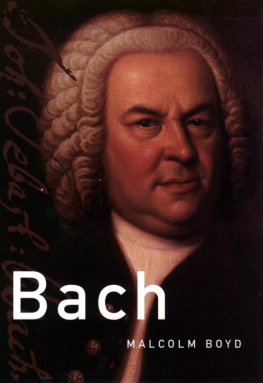
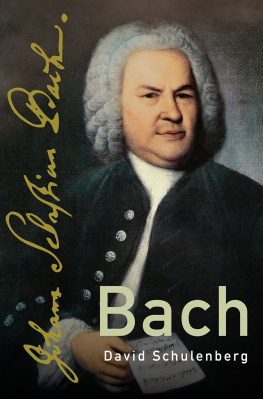


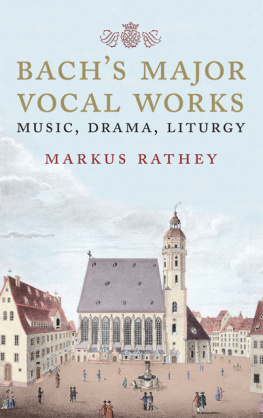
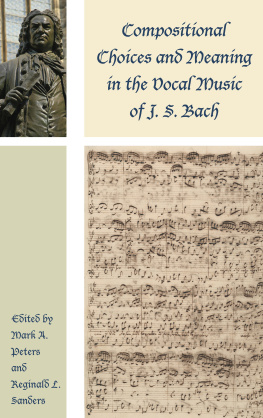

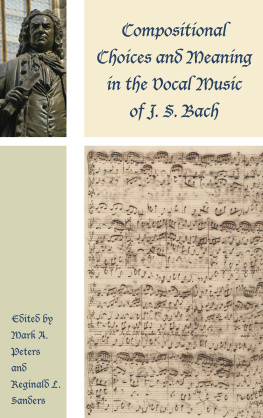
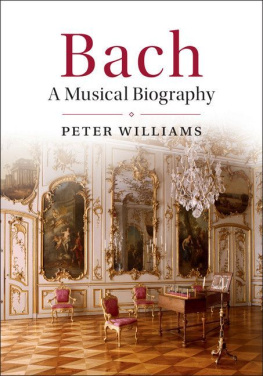
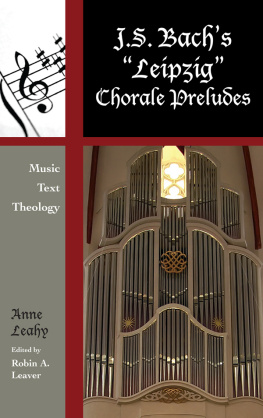

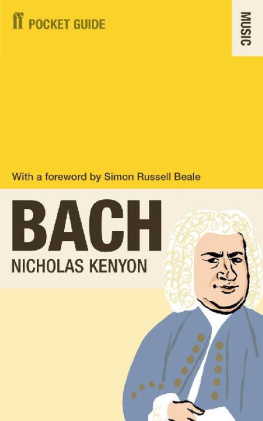






















 T IS NOT TO EXCUSE ANY SHORTCOMINGS IN THE PRESENT VOLUME if I say that the task of writing about J. S. Bach is a more formidable one in the 198os than it was in 1900 or 1947, when my predecessors in the Master Musicians series published their studies of the composer. At that time the image of Bach as a devout Lutheran, his art and life wholly directed towards the improvement of church music, was well established, and seemingly on the firmest foundations. After all, hadn't Philipp Spitta thoroughly researched archival sources for his exhaustive book on the composer published in 1873-80? Hadn't he established a chronology for Bach's works based on the most rigorous scientific methods, including the study of paper types, watermarks, and calligraphy? And didn't the monumental edition of the music published by the Bach-Gesellschaft in 1851-99 provide as complete and accurate a text as any scholar could wish for?
T IS NOT TO EXCUSE ANY SHORTCOMINGS IN THE PRESENT VOLUME if I say that the task of writing about J. S. Bach is a more formidable one in the 198os than it was in 1900 or 1947, when my predecessors in the Master Musicians series published their studies of the composer. At that time the image of Bach as a devout Lutheran, his art and life wholly directed towards the improvement of church music, was well established, and seemingly on the firmest foundations. After all, hadn't Philipp Spitta thoroughly researched archival sources for his exhaustive book on the composer published in 1873-80? Hadn't he established a chronology for Bach's works based on the most rigorous scientific methods, including the study of paper types, watermarks, and calligraphy? And didn't the monumental edition of the music published by the Bach-Gesellschaft in 1851-99 provide as complete and accurate a text as any scholar could wish for?